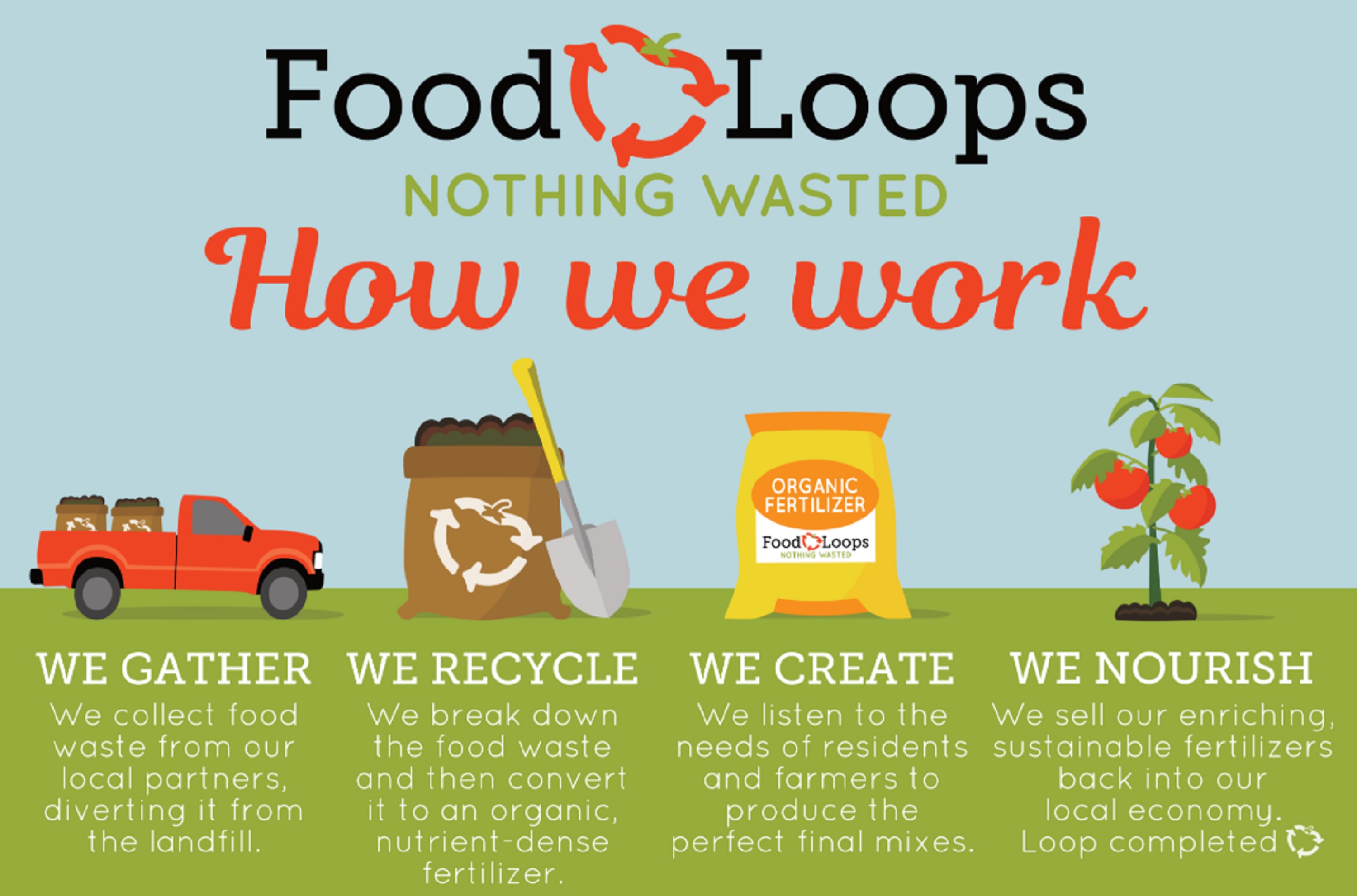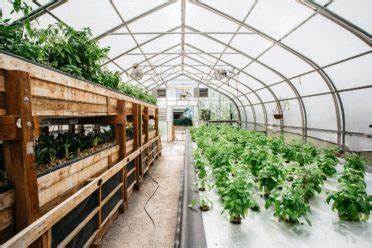
Vertical Farms and the Circular Economy: Closing the Food Loop
Introduction
The concept of vertical farming has gained significant attention in recent years for its potential to revolutionize food production. Vertical farms utilize vertical space and advanced technology to offer a sustainable solution to the challenges of traditional agriculture. This article explores the integration of vertical farms into the circular economy, highlighting their relevance and importance in creating a closed-loop food system.
Historical Background
Evolution of Vertical Farming
Vertical farming has its roots in the early 20th century when scientists and inventors began experimenting with growing plants indoors using artificial light sources. However, it wasn’t until the 21st century that vertical farming gained momentum, thanks to advancements in LED technology and hydroponic systems. Today, vertical farms can be found in urban centers worldwide, maximizing land efficiency and reducing the distance between food production and consumption.
Emergence of the Circular Economy in the Food Industry
The circular economy is an economic model that aims to minimize waste and maximize resource efficiency. In the context of the food industry, it involves closing the loop by reusing, recycling, and repurposing food waste and byproducts. With growing global concerns over food security and sustainability, the circular economy has gained traction as a viable solution. Vertical farms play a crucial role in this model by producing food in a controlled environment using fewer resources.
Key Concepts and Definitions
Vertical Farms
Vertical farms are indoor farming facilities that utilize vertical space to grow crops in stacked layers or racks. By using hydroponic or aeroponic systems, plants are grown without soil, allowing for greater control over nutrients, water, and lighting conditions. Vertical farms enable year-round production, reduce the need for pesticides, and can be located in urban areas, reducing transportation costs and carbon emissions.

Circular Economy
The circular economy is an economic model that aims to minimize waste and keep resources in use for as long as possible. It involves designing out waste and pollution, regenerating natural systems, and creating new business models that benefit society and the environment. In the context of the food industry, the circular economy focuses on reducing food waste, reusing byproducts, and recycling nutrients to create a closed-loop system.
Closing the Food Loop
Closing the food loop refers to the process of creating a self-sustaining food system where waste is minimized, resources are efficiently utilized, and nutrients are recycled back into the system. Vertical farms play a crucial role in closing the food loop by producing food locally and reducing the reliance on traditional farming methods.
Main Discussion Points
Point: Benefits of Vertical Farms in the Circular Economy
Vertical farms offer several benefits in the context of the circular economy.
Increased Food Production Efficiency: Vertical farms maximize land use by growing crops in multiple layers, resulting in higher yields per square foot compared to traditional agriculture. This increased efficiency allows for more food to be produced using fewer resources.
Reduced Environmental Impact: By growing crops indoors, vertical farms eliminate the need for large-scale deforestation and minimize the use of water, fertilizers, and pesticides. This reduces the negative environmental impact associated with traditional farming practices.
Water and Energy Conservation: Vertical farms utilize advanced irrigation systems that recycle and reuse water, significantly reducing water consumption. Additionally, the use of LED lights and energy-efficient technologies helps minimize energy consumption, making vertical farms more sustainable and environmentally friendly.
Point: Integration of Vertical Farms into the Circular Economy
Vertical farms can be effectively integrated into the circular economy, contributing to its goals.
Resource Management and Waste Reduction: Vertical farms can utilize organic waste streams, such as food scraps and agricultural byproducts, as nutrients for plant growth. This reduces waste and the need for synthetic fertilizers, creating a more sustainable farming system.
Utilization of Byproducts and Waste Streams: Vertical farms can convert plant waste into biofuel, animal feed, or compost, ensuring that every part of the plant is utilized. This closed-loop approach reduces waste and contributes to a more circular system.
Collaboration between Vertical Farms and Other Circular Economy Initiatives: Vertical farms can collaborate with other circular economy initiatives, such as recycling facilities and composting centers, to create a holistic system that maximizes resource efficiency and minimizes waste.

Point: Social and Economic Impacts of Vertical Farms in the Circular Economy
Vertical farms have significant social and economic impacts within the circular economy.
Job Creation and Economic Growth: The establishment of vertical farms creates new job opportunities, ranging from agricultural technicians to engineers and marketing professionals. This leads to economic growth and the revitalization of urban areas.
Food Security and Access: Vertical farms can be located in food deserts or areas with limited access to fresh produce, providing a sustainable solution to improve food security. By growing food locally, vertical farms reduce dependence on imports and ensure a stable supply of nutritious food.
Community Development and Resilience: Vertical farms promote community engagement and education by involving local residents in the farming process through programs such as community-supported agriculture. This strengthens community bonds and enhances resilience in the face of environmental and economic challenges.
Case Studies or Examples
Example: AeroFarms – Pioneering Sustainable Vertical Farming in New Jersey
AeroFarms is a leading vertical farming company based in Newark, New Jersey. They have developed a cutting-edge vertical farming technology that maximizes crop yields and minimizes resource consumption. AeroFarms’ farms utilize aeroponic systems and LED lighting to grow leafy greens and herbs in vertical racks. By collaborating with local communities and utilizing vacant buildings, AeroFarms has successfully integrated vertical farming into the circular economy.
Example: Plantagon – The World’s First Vertical Greenhouse in Sweden
Plantagon is a Swedish company that operates the world’s first vertical greenhouse in Linköping, Sweden. The greenhouse utilizes innovative solutions such as heliostats to redirect sunlight, reducing the need for artificial lighting. Plantagon’s vertical greenhouse not only produces fresh, organic vegetables but also incorporates a recycling system that reuses water and nutrients. The project has received international recognition for its sustainable approach to urban agriculture.
Current Trends or Developments
Technological Advances in Vertical Farming
Technological advancements in vertical farming have led to increased efficiency and productivity. Innovations such as smart sensors, automated nutrient delivery systems, and AI-powered climate control systems have made vertical farms more sustainable and economically viable. These technological developments continue to drive the growth and potential of vertical farming in the circular economy.
Integration of Artificial Intelligence and IoT in Vertical Farms
The integration of artificial intelligence (AI) and the Internet of Things (IoT) in vertical farms has revolutionized the way crops are grown. AI algorithms analyze data from sensors to optimize conditions such as lighting, temperature, and humidity, resulting in optimal plant growth. IoT devices enable real-time monitoring and control, allowing farmers to remotely manage their vertical farms. This integration enhances efficiency, reduces waste, and improves resource management.
Adoption of Circular Economy Principles in Food Systems
The adoption of circular economy principles in food systems is gaining momentum globally. Governments, businesses, and consumers are recognizing the need for a more sustainable and efficient food system. This shift towards circularity includes initiatives such as reducing food waste, promoting regenerative agriculture, and integrating vertical farming into urban planning. The circular economy provides a framework for creating a resilient and sustainable future for the food industry.

Challenges or Controversies
Cost and Financial Viability of Vertical Farms
One of the main challenges facing vertical farms is the initial setup cost and ongoing operational expenses. The investment required for infrastructure, technology, and energy can be significant. However, as technology advances and economies of scale are realized, the cost of vertical farming is expected to decrease, making it more financially viable in the long run.
Consumer Acceptance and Perception of Vertical Farming
Consumer acceptance and perception of vertical farming can vary. Some consumers may perceive vertically-grown produce as less natural or less flavorful compared to traditionally grown crops. Educating consumers about the benefits and sustainability of vertical farming is crucial to overcoming these perceptions and gaining wider acceptance.
Regulatory and Policy Barriers
The regulatory and policy landscape surrounding vertical farming is still evolving. Issues related to zoning, building codes, and food safety regulations can present barriers to the widespread adoption of vertical farming. Collaborative efforts between industry stakeholders, governments, and policymakers are necessary to establish clear guidelines and regulations that promote the growth of vertical farming within the circular economy.
Future Outlook
Potential Expansion and Scaling of Vertical Farms
The future of vertical farming looks promising, with potential for expansion and scaling. As technology continues to advance, vertical farms will become more efficient, cost-effective, and scalable. This will allow for larger vertical farms to be established, meeting the growing demand for sustainable and locally grown food.
Integration of Vertical Farming into Urban Planning and Design
The integration of vertical farming into urban planning and design will become essential in creating sustainable and resilient cities. Vertical farms can be incorporated into building structures, transforming them into multifunctional spaces that produce food, improve air quality, and enhance the overall livability of urban areas.
Innovation and Disruption in the Food System
Vertical farming represents a paradigm shift in the way we produce and consume food. Its integration into the circular economy has the potential to disrupt the traditional food system, creating a more sustainable, efficient, and resilient model. Innovation in vertical farming technologies, business models, and collaborations will continue to drive the transformation of the food system.




